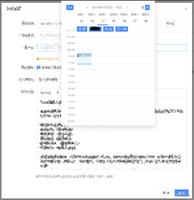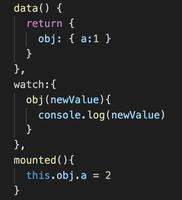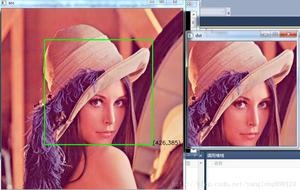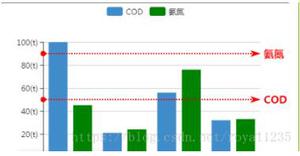建站四部曲之前端显示篇(React+上线)

本系列分为四篇:
- 建站四部曲之后端接口篇(SpringBoot+上线)
- 建站四部曲之Python数据爬虫篇(selenium)
- 建站四部曲之前端显示篇(React+上线)
- 建站四部曲之移动端篇(Android)
零、前言
本系列为了总结一下手上的知识,致敬我的2018
本篇的重点在于:用前两篇的数据使用React搭建一个简单网站
本篇总结的技术点:
React的组件封装、React实现简单的懒加载、React中的网络请求、搜索功能React中form表单与接口的对接、路由react-router-dom的使用、React中文件上传
先回顾一下服务端的接口(以ip:192.168.43.60,端口8089为例)
查询接口:GET请求
----查询所有:
http://192.168.43.60:8089/api/android/note----查询偏移12条,查询12条(即12条为一页的第2页):
http://192.168.43.60:8089/api/android/note/12/12----按区域查询(A为Android数据,SB为SpringBoot数据,Re为React数据)
http://192.168.43.60:8089/api/android/note/area/Ahttp://192.168.43.60:8089/api/android/note/area/A/12/12----按部分名称查询
http://192.168.43.60:8089/api/android/note/name/材料http://192.168.43.60:8089/api/android/note/name/材料/2/2----按类型名称查询(类型定义表见第一篇)
http://192.168.43.60:8089/api/android/note/name/ABCShttp://192.168.43.60:8089/api/android/note/name/ABCS/2/2----按id名称查
http://192.168.43.60:8089/api/android/note/12
添改删接口
添-POST请求:
http://192.168.43.60:8089/api/android/note添-PUT请求:
http://192.168.43.60:8089/api/android/note删-DELETE请求:
http://192.168.43.60:8089/api/android/note/1
一、首页的制作
1.网页效果(笔记本):已上线,可访问:http://www.toly1994.com
手机端用媒体查询简单适配了一下
首页效果.png
2.示意图
这里的数据写死在了
IndexData.js里,当然也可以让服务端提供数据,方便动态修改只要格式和
IndexData.js里的json对象保持一致就行了
首页.png
3.路由的使用
由于主页比较简单,布局样式就不贴了,这里讲一下router的使用
3.1:安装
npm i react-router-dom3.2:新建一个router.js管理路由
其实也不是非常复杂,一句画来说就是:
http://http://192.168.43.60/Android可以访问到Android组件页面
import {BrowserRouter as Router, Route, Switch} from 'react-router-dom'import React from 'react';
import Index from "./pagers/index/Index";
import Android from "./pagers/Android";
import SpringBoot from "./pagers/SpringBoot";
import ReactJS from "./pagers/ReactJS";
import Note from "./pagers/Note";
export default () => (
<Router>
<Switch>
<Route path={'/index'} component={Index}/>
<Route path={'/Android'} component={Android}/>
<Route path={'/SpringBoot'} component={SpringBoot}/>
<Route path={'/ReactJS'} component={ReactJS}/>
<Route path={'/Note'} component={Note}/>
<Route path={'/'} component={Index}/>
</Switch>
</Router>
)
3.3:使用
ReactDOM.render(router(), document.getElementById('root'));3.4:跳转:
a标签的href和Link组件的to都可以,如果跳到Android页,写上`/Android`就行了二、单条目的封装:
单条目的封装.gif
1.组件状态:
核心是itemInfo,字段名称与接口数据保持一致
this.state = { top: "100%",
itemInfo: {
type: "数据读写",
name: "1-SI--安卓SQLite基础使用指南",
jianshuUrl: "https://www.jianshu.com/p/58076ca06a33",
imgUrl: "http://192.168.43.60:8089/imgs/android/f593dab6a21907dec2dfed6ffc39b7e4.png",
createTime: "2018-08-26",
info: "零、前言 [1]熟悉MySQL的学这个就像会西瓜的人去学吃哈密瓜一样简单。[2]如果对MySQL不太熟悉的童鞋,可以看一下我的这篇:Spring..."
}
}
2.组件属性和行为
//组件属性this.props.itemInfo:上层组件传递来的数据
this.props.isNew :是否加"新"字
this.props.css: 暴露样式修改接口(主要为了修改宽高)
//组件行为:
鼠标进入是遮罩层+介绍文字进入+图片放大
3.分析布局层级关系
CSS层级关系.png
标签分级.png
4.标签的书写
使用top的变化来让悬浮时文字移入
<div className={"ItemBox"} style={{width: "300px", height: "200px"}}> <div className={"box-img-bg"}
style={{backgroundImage: `url(${this.state.itemInfo.imgUrl})`}}>
</div>
<div className="mask-with-text"
onMouseEnter={() => {
let itemInfo = this.state.itemInfo;
this.setState({top: 0, itemInfo})
}}
onMouseLeave={() => {
let itemInfo = this.state.itemInfo;
itemInfo.text = "";
this.setState({top: "100%", itemInfo})
}}>
<div className="tag">
<a href="">{this.state.itemInfo.type}</a>
</div>
<div className={"text"} style={{
paddingTop: this.state.top
}}>
<a href={this.state.itemInfo.jianshuUrl} target={"_blank"}>
{this.state.itemInfo.info}
</a>
</div>
</div>
<div className={"box-info"}>
<div className={ "new"}>
</div>
<div className={"text-info"}>
<a href={this.state.itemInfo.jianshuUrl} target={"_blank"}>
{this.state.itemInfo.name}
</a>
</div>
</div>
</div>
5.scss样式书写
//使用flex布局并内容居中@mixin flexCenter() {
display: flex;
justify-content: center;
align-items: center;
}
//宽高同父控件
@mixin match-parent() {
width: 100%;
height: 100%;
}
//文字单行加省略号
@mixin text-single() {
font-weight: bold;
text-align: center;
display: inline-block;
white-space: nowrap;
overflow: hidden;
text-overflow: ellipsis;
}
//a标签的统一处理
@mixin handleA() {
a {
color: #fff;
&:hover {
color: #4B86FF;
text-decoration: underline;
}
}
}
.ItemBox {
margin-top: 16px;
border-radius: 10px;
position: relative;
overflow: hidden;
box-shadow: rgba(214, 214, 214, .8) 1px 1px 2px 2px;
&:hover {
.mask-with-text {
transition: background-color .5s cubic-bezier(0, 0.51, 1, 1);
background-color: rgba(0, 0, 0, .5);
}
.box-img-bg {
transition: transform .5s cubic-bezier(0, 0.51, 1, 1);
transform: scale(1.2);
}
}
.box-img-bg {
border-radius: 10px;
position: relative;
background-size: 100%;
background-repeat: no-repeat;
@include match-parent;
}
.mask-with-text {
.tag {
background-image: url("../static/imgs/tag.svg");
font-size: 10px;
text-align: center;
width: 65px;
height: 65px;
position: absolute;
background-size: 100% 100%;
right: -2px;
top: -20px;
@include flexCenter;
@include handleA;
}
border-radius: 10px 0 0 10px;
position: absolute;
left: 0;
top: 0;
@include match-parent;
@include flexCenter;
.text {
transition: padding-top .6s;
padding-left: 20px;
padding-right: 20px;
@include handleA;
}
}
.box-info {
position: absolute;
bottom: 0;
width: 100%;
height: 25%;
background-color: rgba(0, 0, 0, .5);
@include flexCenter;
.new {
background-image: url("../static/imgs/new.svg");
align-self: flex-start;
width: 30px;
height: 30px;
position: absolute;
left: 0;
background-size: 30px 30px;
}
.text-info {
@include handleA;
width: 80%;
@include text-single()
}
}
}
6.静态界面组件化(属性对接):
<div className={"ItemBox"} style={this.props.css}>componentDidMount() { this.setState({
itemInfo: this.props.itemInfo
})
}
三、获取数据,填充界面
Page页的抽取与数据的流入.png
1.数据的获取(以Android界面为例)
1.1:添加依赖
这里使用axios发送请求
npm i axios1.2:获取数据方法简单封装:DataFetcher.js
封装一下是为了更符合接口的操作,以便复用
const axios = require('axios');const BASE_URL = 'http://192.168.43.60:8089';
const API = '/api/android/note/';
export default class DataFetcher {
static findAll(callback, style = '', offset = 0, num = 10000) {
let s = BASE_URL + API + style + "/" + offset + "/" + num;
console.log(s);
axios.get(s).then(rp => {
callback(rp.data.data)
});
}
static findAndroid(callback, offset = 0, num = 10000) {
DataFetcher.findAll(callback, 'area/A', offset, num)
}
}
1.3:使用方法:
获取数据.png
DataFetcher.get(data => { console.log(data);
}, 'area/A');
2.Pager页的实现
数据获取了,就已经万事具备
2.1.Pager的状态与属性:
//Pager的状态this.state = {
data: []
}
//Pager的状态属性
this.props.img 背景图
this.props.type 类型
this.props.sub_title 副标题
this.props.title标题
2.2.数据获取,更新状态
componentDidMount() { DataFetcher.get(data => {
this.setState({data})
}, this.props.type);
}
2.3.根据数据生成视图
renderBody() { return (
this.state.data.map((i, index) => {
return (
<ItemBox key={index} itemInfo={i}
isNew={index < 3}
css={{width: "30%", height: "100%"}}>
</ItemBox>);
}
)
)
}
2.4.使用
只要改变:
pager就能加载不同类型的数据
class Android extends Component { render() {
return (
<div>
<Pager
pager={{
img: Logic.loadImg("android.svg"),
title: "Android 技术栈",
sub_title: "A complete node and summary for Android.",
type: "area/A"
}}/>
</div>
);
}
}
3.懒加载的实现
3.1:问题所在:
问题所在:请求时是所以数据,遍历时所有条目都会加载
解决方案:查询范围的接口,监听滚动事件,快到底部时加载更多
图片全部加载.gif
3.2:滚动监听:
this.state = { dataCount: 9,//默认加载9条
data: []
}
componentDidMount() { let self = this;
window.onscroll = () => {
let scrollHeight = document.body.scrollHeight;
let top = document.documentElement.scrollTop || document.body.scrollTop;
if (scrollHeight - (top + document.body.clientHeight) < 80) {
self.state.dataCount += 6;//每次多加载6条
DataFetcher.get((data) => {
this.setState({data})
}, this.props.type, 0, this.state.dataCount);
}
};
DataFetcher.get(data => {
this.setState({data})
}, this.props.type, 0, this.state.dataCount);
}
懒加载.gif
四、搜索功能的实现:
搜索功能.gif
折腾了好一会,总算摆弄处理了,期间犯了一个低级失误,mark一下:
搜索时记得在条目的:
componentWillReceiveProps(nextProps)里更新state
1.查找组件的封装
很简单,样式上面的自己怎么好看怎么来吧
回顾一下按部分名称查询接口:
http://192.168.43.60:8089/api/android/note/name/材料
export default class Searcher extends Component { constructor() {
super();
this.state = {
text: ""
}
}
render() {
return (
<div className={"pager-search"}>
<input className="input-search" defaultValue={this.props.searcher.text}
onInput={(e) => {
this.setState({
text: e.target.value
});
}}>
</input>
<img src={Logic.loadImg('search3.svg')} alt=""
onClick={() => {
this.props.searcher.doOnClick(this.state.text)
}}/>
</div>
)
}
}
2.样式
.pager-search { position: absolute;
right: 0;
top: 0;
padding: 10px;
display: flex;
justify-content: space-around;
input {
padding: 6px;
box-shadow: #EAEAEA 1px 1px 30px 1px;
width: 60%;
color: #cccccc;
border-bottom: transparent;
border-width: 1px;
background-color: rgba(195,243,231,.5);
border-radius: 10px;
&:focus {
color: black;
}
}
img {
width: 50px;
&:hover {
transition: transform .5s;
transform: scale(1.2);
fill: blue;
}
}
}
3.请求方法的提取
这里定义了一个变量盛放type
let type = '';componentDidMount() {
type = this.props.pager.type;//为type赋值
//....
}
getData() {//抽取获取数据函数
DataFetcher.get(data => {
this.setState({data})
}, type, 0, this.state.dataCount);
}
4.搜索框的使用:
<Searcher searcher={{
text: "张风捷特烈是谁?",
doOnClick: (value) => {
type = "name/" + value;
this.getData();
}
}
}/>
5.最重要的一点:ItemBox.js
componentWillReceiveProps(nextProps) { this.setState({
itemInfo: nextProps.itemInfo
});
}
其实搜索功能本身不难,有后台接口配合就行了
五、添加操作:
1.使用axios发送post请求,封装插入方法
使用post请求插入数据.png
static insert(obj) { let s = BASE_URL + API;
let params = new URLSearchParams();
params.append("type", obj.type);
params.append("name", obj.name);
params.append("imgUrl", obj.name);
params.append("localPath", obj.localPath);
params.append("jianshuUrl", obj.jianshuUrl);
params.append("juejinUrl", obj.juejinUrl);
params.append("createTime", obj.createTime);
params.append("info", obj.info);
params.append("area", obj.area);
axios.post(s, params).then(function (response) {
alert(response.data.data);
}).catch(function (error) {
console.log(error);
});
}
2.测试插入数据的使用
DataFetcher.insert({ type: "C",
name: "hell0",
localPath: "hell0",
jianshuUrl: "hell0",
juejinUrl: "hell0",
createTime: "2018-12-13",
info: "hell0",
area: "A"
});
3.使用axios上传文件方法封装
static upload(name,file) { let s = BASE_URL + "/api/android/upload";
let fd = new FormData();
fd.append(name, file);
let config = {
headers: {
'Content-Type': 'multipart/form-data'
}
};
axios.post(s, fd, config).then(res => {
console.log(res)
}).catch(res => {
console.log(res)
})
}
4.上传方法的使用
<form id={"add-form"} onSubmit={this.handleSubmit.bind(this)} method={"post"} name={"add"} <label>上传图片:<input type="file" name={"file"}/>
</label>
<input type="submit" value="提交"/>
</form>
//执行上传handleSubmit(event) {
let input = document.forms['add'].file;
DataFetcher.upload("file", input.files[0]);
event.preventDefault();
}
文件上传成功.png
六、React项目的上线
1.package.json配置homepage
"homepage": "http://toly1994.com"2.打包
build一下,将生成的build文件加拷贝到服务器3.运行:确保服务器上有node,并且有serve
没有serve的话:npm i serve
serve -p 80 -s上线.png
>那个jQuery随意操纵dom的时代已经一去不复返了,React的思想非常符合Android 我经常把React自定义组件和Android自定义控件去比较:
React组件接收的props就像Android自定义控件中的自定义属性,并且React灵活很多
css的布局就像Android中的布局,相比而言,css强大很多
ES6的语法加持,更让React写起来符合Javaer的心情,所以React写起来很舒心
终于打完收工,前端我是打酱油的,不当之处,还请海涵。
下一站,安卓移动端(命属),敬请期待。
后记:捷文规范
1.本文成长记录及勘误表
| 项目源码 | 日期 | 备注 |
|---|---|---|
| V0.1 | 2018-12-13 | [建站四部曲之前端显示篇(React+上线)](https://www.jianshu.com/p/b0b4776cc08e |
2.更多关于我
| 笔名 | 微信 | 爱好 | |
|---|---|---|---|
| 张风捷特烈 | 1981462002 | zdl1994328 | 语言 |
| 我的github | 我的简书 | 我的掘金 | 个人网站 |
3.声明
1----本文由张风捷特烈原创,转载请注明
2----欢迎广大编程爱好者共同交流
3----个人能力有限,如有不正之处欢迎大家批评指证,必定虚心改正
4----看到这里,我在此感谢你的喜欢与支持
icon_wx_200.png
以上是 建站四部曲之前端显示篇(React+上线) 的全部内容, 来源链接: utcz.com/z/381841.html









